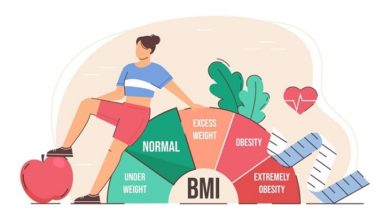10 Benefits of Regular Stretching

Stretching is a simple yet often overlooked practice that can have a profound impact on your health and well-being. In this article, we will delve into the extensive benefits of regular stretching. From increased flexibility to improved posture, reduced stress, and enhanced athletic performance, you’ll discover why making stretching a part of your daily routine is a wise choice for a healthier, more vibrant life.
Flexibility is a key component of physical fitness. It’s not only about being able to touch your toes; it’s about having the freedom to move your body comfortably and with a full range of motion. Regular stretching is a surefire way to boost your flexibility.
Benefits of Regular Stretching
Incorporating regular stretching into your daily routine offers a wide array of advantages. Here are some of the key benefits:
1. Improved Flexibility
Flexibility is the primary benefit of stretching. Regular stretching exercises lengthen your muscles and tendons, increasing your range of motion. This enhanced flexibility allows you to perform everyday activities with greater ease and less strain.
Whether you’re reaching for something on a high shelf, tying your shoelaces, or playing your favorite sport, improved flexibility is a game-changer. It reduces the risk of injury and enhances your overall quality of life.
2. Reduced Muscle Tension
Muscle tension and stiffness are common complaints, particularly for those with sedentary lifestyles or high-stress levels. Stretching helps alleviate muscle tension by promoting blood flow to your muscles, which, in turn, encourages relaxation.
If you find yourself hunching over a computer desk for extended periods, experiencing neck and shoulder tension, or dealing with sore back muscles, stretching can provide much-needed relief. Incorporating simple neck, shoulder, and back stretches into your daily routine can work wonders for reducing muscle tension.
3. Enhanced Posture
Poor posture is often a result of muscle imbalances and tightness. Regular stretching helps correct these issues, contributing to improved posture. When your muscles are more flexible and balanced, they can better support your spine and maintain the natural curves of your back.
Good posture is not only aesthetically pleasing but also critical for overall health. It reduces the risk of back pain, enhances lung capacity, and ensures that your body functions optimally.
4. Stress Reduction
Stress is a common factor in modern life. Stretching incorporates mindfulness and deep breathing, making it an excellent tool for stress reduction. When you engage in stretching exercises, you shift your focus away from stressors and towards your body and breath.
The relaxation achieved through stretching has a calming effect on the nervous system, reducing stress and anxiety. It allows you to recharge and face life’s challenges with a clearer mind and a more relaxed demeanor.
5. Enhanced Athletic Performance
Athletes of all levels incorporate stretching into their training routines for a reason – it works. Stretching before and after exercise improves athletic performance by increasing flexibility, reducing the risk of injury, and enhancing muscle coordination.
Whether you’re a professional athlete or enjoy recreational sports, stretching can help you perform at your best. Dynamic stretching before exercise and static stretching post-exercise can make a significant difference in your performance and recovery.
6. Improved Blood Circulation
Stretching encourages better blood circulation throughout your body. When you stretch, your muscles relax and open up, allowing blood to flow more freely. Improved circulation benefits your overall health by ensuring that oxygen and nutrients reach your cells more efficiently.
Healthy blood circulation is vital for heart health, muscle function, and overall well-being. Incorporating stretching into your daily routine contributes to this essential aspect of health.
7. Better Mental Health
Physical and mental health are closely intertwined. Regular stretching has a positive impact on mental health by promoting relaxation, reducing stress, and increasing the release of endorphins – the body’s natural mood boosters.
If you’re feeling overwhelmed or stressed, taking a few minutes to stretch can provide an instant mental refresh. The combination of deep breathing and physical movement can help you clear your mind and regain focus.
8. Enhanced Sleep Quality
Poor sleep can result from muscle tension and discomfort. Stretching before bedtime can help relax your muscles and prepare your body for a restful night’s sleep. It’s an excellent way to unwind and de-stress at the end of the day.
Incorporating a short stretching routine into your bedtime ritual can significantly improve your sleep quality. You’ll wake up feeling more rested and ready to tackle the day.
9. Pain Relief
Stretching can be an effective method for relieving chronic pain, such as back pain, neck pain, and headaches. By targeting specific muscle groups through stretching, you can reduce the tension and discomfort associated with these issues.
If you suffer from persistent pain, consider speaking with a healthcare professional or physical therapist about a stretching routine tailored to your needs. Stretching can complement other pain management strategies and lead to significant relief.
10. Better Digestion
Surprisingly, stretching can even benefit your digestive system. Certain stretches, particularly those that involve twisting or bending, can stimulate digestion by massaging and activating the organs in your abdominal region.
If you’re looking to aid your digestion and prevent discomfort, consider incorporating these specific stretches into your routine. They can make a noticeable difference in how you feel after meals.
How to Start Regular Stretching
Incorporating regular stretching into your daily routine is easier than you might think. Here’s how to get started:
Set Realistic Goals
Begin with achievable goals. Consider your current level of flexibility and what you hope to accomplish. Whether it’s touching your toes or reducing muscle tension, setting clear goals will keep you motivated.
Create a Routine
Consistency is key when it comes to stretching. Create a daily or weekly routine that works for your schedule. It can be as short as 10 minutes or as long as 30 minutes, depending on your goals and availability.
Choose a Variety of Stretches
Incorporate a variety of stretches that target different muscle groups. Include stretches for your neck, shoulders, back, legs, and arms. A well-rounded routine ensures that your whole body benefits.
Listen to Your Body
Pay attention to your body’s signals. Stretch to the point of mild tension, never to the point of pain. It’s essential to respect your body’s limits and progress at your own pace.
Combine Stretching with Deep Breathing
Deep breathing enhances the benefits of stretching. Inhale deeply as you prepare for a stretch and exhale as you ease into it. This combination promotes relaxation and flexibility.
Frequently Asked Questions (FAQs)
What is the importance of flexibility?
Flexibility is vital for a full range of motion and the ability to move comfortably. It reduces the risk of injury, enhances posture, and improves overall quality of life.
Can stretching help with muscle tension?
Yes, regular stretching helps reduce muscle tension by promoting blood flow and relaxation. It’s particularly effective for alleviating tension in the neck, shoulders, and back.
How often should I stretch?
The frequency of stretching depends on your goals and availability. Aim for at least 10-30 minutes of stretching most days of the week to experience significant benefits.
Can stretching improve posture?
Stretching can improve posture by correcting muscle imbalances and promoting flexibility. Good posture reduces the risk of back pain and supports overall well-being.
Can stretching reduce stress?
Yes, stretching reduces stress by incorporating mindfulness and deep breathing. It calms the nervous system and provides mental relaxation.
What are the benefits of stretching before exercise?
Stretching before exercise increases flexibility, reduces the risk of injury, and enhances muscle coordination, improving athletic performance.
Conclusion
Regular stretching is a simple yet powerful practice that offers a multitude of benefits for your overall health and well-being. It improves flexibility, reduces muscle tension, enhances posture, and provides relief from stress.
Incorporating stretching into your daily routine can also enhance athletic performance, improve blood circulation, promote better mental health, and contribute to higher-quality sleep. With these advantages, it’s clear that making regular stretching a part of your life is a wise choice for a healthier, more vibrant you.







